Electro-codeposition of MCrAlY Coatings for Advanced Gas Turbine Applications - 11th Quarterly Research Report
The aim of this research is to seek a sulfur-free plating solution for electro-codeposition of (Ni,Co)-CrAlY composite coatings. In this quarter, a sulfur-free, all-chloride plating solution was investigated to lower the sulfur content in the Ni-Co coating matrix. Optimized bath composition and the use of a wetting agent are critical to good results.
by
Prof. Ying Zhang* & B.L. Bates
Department of Mechanical Engineering
Tennessee Technological University
Cookeville, Tennessee, USA
Editor’s Note: This NASF-AESF Foundation research project report covers the eleventh quarter of project work (July-September 2020) on an AESF Foundation Research project at the Tennessee Technological University, Cookeville, Tennessee. A printable PDF version of this report is available by clicking HERE.
Summary
The aim of this research is to seek a sulfur-free plating solution for electro-codeposition of (Ni,Co)-CrAlY composite coatings. MCrAlY coatings electrodeposited in a Watts bath typically contain a trace amount of sulfur, which can adversely affect their high-temperature oxidation resistance. In this quarter, a sulfur-free, all-chloride plating solution was investigated to lower the sulfur content in the Ni-Co coating matrix. It was found that the increase in nickel and cobalt chloride concentrations and decrease in pH from 4.0 to 2.0 in the all-chloride solution led to smoother and more uniform coating. However, after post-plating heat treatment at 1080°C, blistering occurred. The effects of two types of wetting agent, i.e., sodium lauryl sulfate and Triton X-100, were studied. As compared to Triton X-100, sodium lauryl sulfate seemed to be more effective in eliminating pitting/blistering in the heat-treated Ni-Co coatings. These results suggest that the optimization of solution concentration/pH and the selection of a suitable wetting agent are critical for achieving uniform, sulfur-free, defect-free MCrAlY coatings electrodeposited with an all-chloride solution.
Technical report
I. Introduction
To improve high-temperature oxidation and corrosion resistance of critical superalloy components in gas turbine engines, metallic coatings such as diffusion aluminides or MCrAlY overlays (where M = Ni, Co or Ni+Co) have been employed, which form a protective oxide scale during service.1 The state-of-the-art techniques for depositing MCrAlY coatings include electron beam-physical vapor deposition (EB-PVD) and thermal spray processes.1 Despite the flexibility they permit, these techniques remain line-of-sight which can be a real drawback for depositing coatings on complex-shaped components. Further, high costs are involved with of the EB-PVD process.2 Several alternative methods of making MCrAlY coatings have been reported in the literature, among which electro-codeposition appears to be a more promising coating process.
Electrolytic codeposition (also called “composite electroplating”) is a process in which fine powders dispersed in an electroplating solution are codeposited with the metal onto the cathode (specimen) to form a multiphase composite coating.3,4 The process for fabrication of MCrAlY coatings involves two steps. In the first step, pre-alloyed particles containing elements such as chromium, aluminum and yttrium are codeposited with the metal matrix of nickel, cobalt or (Ni,Co) to form a (Ni,Co)-CrAlY composite coating. In the second step, a diffusion heat treatment is applied to convert the composite coating to the desired MCrAlY coating microstructure with multiple phases of β-NiAl, γ-Ni, etc.5
Compared to conventional electroplating, electro-codeposition is a more complicated process because of the particle involvement in metal deposition. It is generally believed that five consecutive steps are engaged:3,4 (i) formation of charged particles due to ions and surfactants adsorbed on particle surface, (ii) physical transport of particles through a convection layer, (iii) diffusion through a hydrodynamic boundary layer, (iv) migration through an electrical double layer and (v) adsorption at the cathode where the particles are entrapped within the metal deposit. The quality of the electro-codeposited coatings depends upon many interrelated parameters, including the type of electrolyte, current density, pH, concentration of particles in the plating solution (particle loading), particle characteristics (composition, surface charge, shape, size), hydrodynamics inside the electroplating cell, cathode (specimen) position and post-deposition heat treatment, if necessary.3-6
There are several factors that can significantly affect the oxidation and corrosion performance of the electrodeposited MCrAlY coatings, including: (i) the volume percentage of the CrAlY powder in the as-deposited composite coating, (ii) the CrAlY particle size/distribution and (iii) the sulfur level introduced into the coating from the electroplating solution. This three-year project aims to optimize the electro-codeposition process for improved oxidation/corrosion performance of the MCrAlY coatings. The three main tasks are as follows:
- Task 1 (Year 1): Effects of current density and particle loading on CrAlY particle incorporation.
- Task 2 (Year 2): Effect of CrAlY particle size on CrAlY particle incorporation.
- Task 3 (Year 3): Effect of electroplating solution on the coating sulfur level.
II. Background
A typical MCrAlY coating consists of 8–12% Al, 18–22% Cr, and up to 0.5% Y (in wt%). Other more complicated compositions of MCrAlYs contain additional elements such as hafnium, silicon and tantalum.7,8 The concentrations of some minor elements (e.g., sulfur, yttrium and hafnium) play an important role in affecting the growth and adhesion of the oxide scale. The detrimental effect of sulfur on oxide scale adherence of MCrAlY alloys has been well documented.9 Small amounts of sulfur can segregate to the alumina-metal interface and weaken the interface.10
Table 1 - Composition of Ni plating solutions and deposition conditions (adapted from Ref. 15).
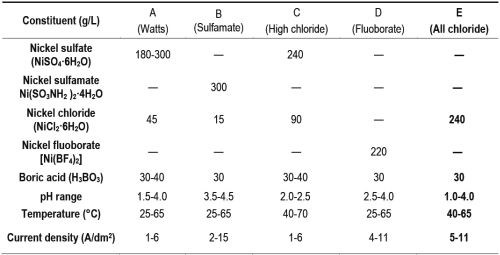
The electrolytes used to deposit the nickel or cobalt metal matrix for forming the MCrAlY coating are typically sulfate- or sulfamate-based solutions.11,12 Approximately 0.006-0.013 wt% (60-130 ppm) of sulfur has been reported in electroplated nickel coatings using these solutions.13,14 Table 1 lists the five commercial nickel plating solutions and their deposition parameters.15 The Watts bath (Solution A) is the most commonly used electrolyte. The large amount of nickel sulfate provides the necessary concentration of nickel ions. Nickel chloride improves anode corrosion and also increases conductivity. Boric acid is added as a weak buffer to maintain pH. As shown in Table 1, there are three sulfur-free plating solutions (C, D and E). The proposed work has been focused on Solutions D and E; Solution C (high chloride) was not selected due to the very narrow pH range (2.0-2.5) required. According to our previous study results, the fluoborate bath is not suitable for codeposition of CrAlY-based particles due to the reaction between the solution and the powder at 50°C, leading to the formation of a dark powdery coating. Therefore, our current research effort focuses on the all-chloride solution (E).
III. Experimental procedure
Disc specimens of Ni200 (1.6 mm thick, ~17 mm in diameter) were ground to #600 grit using SiC grinding papers, followed by grit blasting with #220 Al2O3 grit. The spherical CrAlY powder used in this research was manufactured by gas atomization and was purchased from Sandvik. The powder had a mean particle diameter of 9.5 μm and it was sieved through a 20-μm screen (625 mesh) prior to usage.
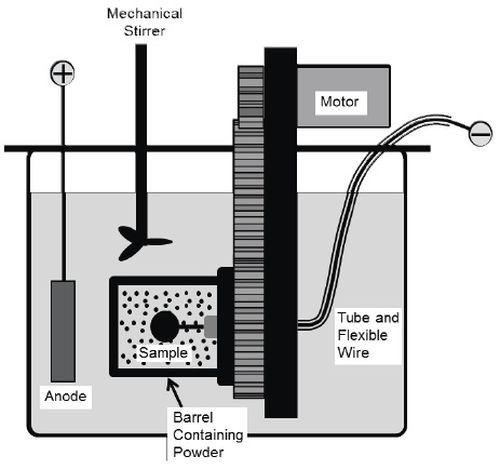
Figure 1 - Schematic of the barrel system.
A rotating barrel system similar to the one illustrated in Fig. 1 was used in the electro-codeposition experiments.6 Four different all-chloride solutions were investigated; their compositions and the electro-codeposition parameters are given in Table 2. Two different wetting agents, i.e., sodium lauryl sulfate (SLS) and Triton X-100 (T100), were assessed regarding their effectiveness in minimizing defects in the electro-codeposited coatings. SLS is a commonly used wetting agent in Watts bath. While it performs well, it does contain sulfur. T100 is a sulfur-free alternative to SLS.16
In order to find the optimal pH range, samples were first plated in a beaker without powder. The specimen was positioned vertically parallel to the two nickel anodes. The solution was agitated using a magnetic stirrer.
Table 2 - Composition of all-chloride solutions and plating conditions

After plating, the coated specimens were heat-treated in vacuum for 6 hr at 1080°C. The post-deposition heat treatment was carried out in a horizontal alumina tube furnace. A vacuum of at least 10-6 torr was maintained. The heating rate was 20°C/min. After completion, the samples were furnace cooled to room temperature. The coatings were examined by optical microscopy and scanning electron microscopy (SEM) equipped with energy dispersive spectroscopy (EDS).
IV. Results and discussion
Figure 2 shows the samples that were plated in Solutions 1 and 2 at two different pH levels (2.0 and 4.0). Pits were observed on the coating surface plated at pH of 2.0 in Solution 1 containing relatively low nickel and cobalt chlorides (Fig. 2a), and large blisters were also formed after heat treatment at 1080°C for 6 hr (Fig. 2a’). This heat treatment process has been used for all of our electro-codeposited (Ni,Co)-CrAlY coatings for forming the desired phases / microstructure through interdiffusion between the CrAlY particles and the (Ni,Co) matrix. It is worth noting that such heat treatment is more severe than most post-plating anneals that are typically carried out at much lower temperatures.17
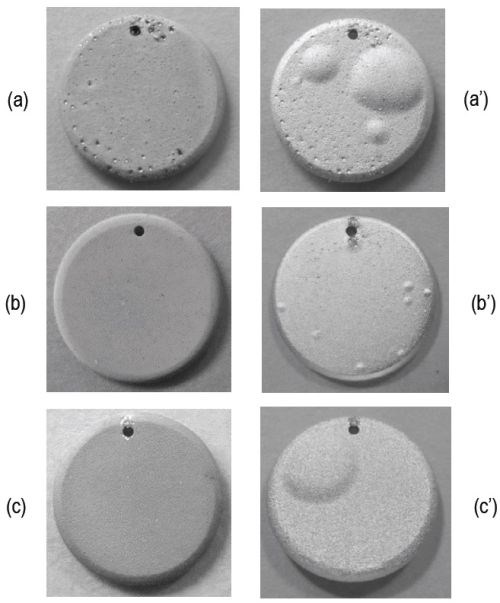
Figure 2 - Macro images of the specimens plated in Solutions 1 and 2 at different pH values before and after heat treatment; (a) and (a’): Solution 1, pH = 2.0; (b) and (b’): Solution 2, pH = 2.0; (c) and (c’): Solution 2, pH = 4.0. (a)-(c): before heat treatment; (a’)-(c’): after heat treatment.
When the nickel and cobalt chloride concentrations were increased (Solution 2) but the pH was kept at 2.0, the as-plated coating became smoother and more uniform, as shown in Fig. 2b. Smaller blisters were formed on the coating surface after post-plating heat treatment, Fig. 2b’. With the increase of pH to 4.0, although the coating looked similar after plating (Fig. 2c). Large blisters were observed after heat treatment (Fig. 2c’). Increased blistering with the increased solution pH was not expected; therefore, more samples were plated at the pH of 2.0. However, similar results were observed. SEM surface images (Fig. 3) revealed relatively fine grain structure of the coating plated in the all-chloride solution at pH of 2.0.
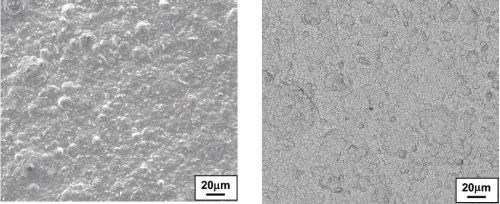
Figure 3 - SEM surface images of the specimen plated at pH of 2.0: (a) secondary electron image; (b) backscattered-electron image.
To reduce pits and blisters in the coating, two wetting agents (SLS and T100) were utilized while keeping the solution pH at 2.0 and their effects were compared. As displayed in Figs. 4a and 4a’, the coating plated in the solution with the addition of 0.2 g/L SLS (Solution 3) was uniform and adherent both before and after heat treatment. In contrast, the coating plated in the solution with T100 appeared darker (Fig. 4b) and blistering occurred again after heat treatment Fig. 4b’. Thus, the wetting agent SLS seemed to be more effective in preventing pitting or blistering.
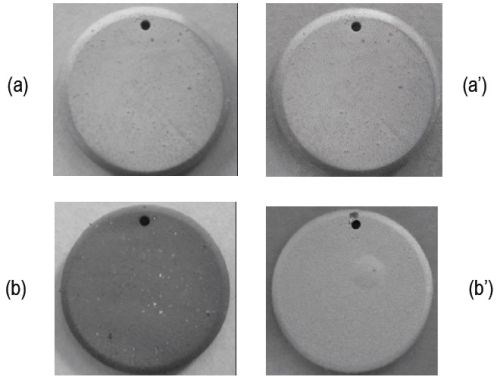
Figure 4 – Macro images of the specimens plated in the solutions at pH of 2.0 with different wetting agents before and after heat treatment (a) SLS and (b) T100; (a) and (b) before heat treatment; (a’) and (b’) after heat treatment.
Based on these results, as compared to the Watts bath it was more challenging to achieve defect-free Ni-Co coatings with the all-chloride solution. Coatings from this electrolyte are typically smoother, finer grained, harder, and stronger than those from Watts solutions and more highly stressed.11 This might be the cause for the formation of blisters after post-plating heat treatment at relatively high temperatures. However, it can be concluded that with the optimization of the solution concentration, pH and the addition of proper wetting agent, Ni-Co alloy coatings free of defects can be achieved with the all-chloride solution.
References
1. G.W. Goward, Surf. Coat. Technol., 108-109, 73-79 (1998).
2. A. Feuerstein, et al., J. Therm. Spray Technol., 17 (2), 199-213 (2008).
3. C.T.J. Low, R.G.A. Wills and F.C. Walsh, Surf. Coat. Technol., 201 (1-2), 371-383 (2006).
4. F.C. Walsh and C. Ponce de Leon, Trans. Inst. Metal Fin., 92 (2), 83-98 (2014).
5. Y. Zhang, JOM, 67 (11), 2599-2607 (2015).
6. B.L. Bates, J.C. Witman and Y. Zhang, Mater. Manuf. Process, 31 (9), 1232-1237 (2016).
7. J.R. Nicholls, MRS Bull., 28 (9), 659-670 (2003).
8. A.V. Put, D. Oquab and E. Péré, et al., Oxid. Met., 75 (5-6), 247-279 (2011).
9. J.L. Smialek, JOM, 52 (1), 22-25 (2000).
10. B.A. Pint, Oxid. Met., 45 (1-2), 1-37 (1996).
11. G.A. Di Bari, in Modern Electroplating, 5th Ed., Edited by M. Schlesinger and M. Paunovic, John Wiley & Sons, 2010; pp. 79-114.
12. R. Oriňáková, et al., J. Appl. Electrochem., 36 (9), 957-972 (2006).
13. R. Brugger, in Nickel Plating, 1st Ed., Clare O’Molesey Ltd., Molesey, Surrey, 1970; pp. 46-47.
14. H.M. Heiling, Metall., 14, 549-561 (1960).
15. N.V. Parthasaradhy, Practical Electroplating Handbook, Prentice Hall, 1989, p. 184.
16. S. Devaraj and N. Munichandraiah, J. Electrochem. Soc., 154 (10), A901-A909 (2007).
17. K. Farrell and J.T. Houston, Metall. Mater. Trans. B, 1 (7), 1979-1986 (1970).
Past project reports
1. Quarter 1 (January-March 2018): Summary: NASF Report in Products Finishing; NASF Surface Technology White Papers, 82 (12), 13 (September 2018); Full paper: http://short.pfonline.com/NASF18Sep1.
2. Quarter 2 (April-June 2018): Summary: NASF Report in Products Finishing; NASF Surface Technology White Papers, 83 (1), 13 (October 2018); Full paper: http://short.pfonline.com/NASF18Oct1.
3. Quarter 3 (July-September 2018): Summary: NASF Report in Products Finishing; NASF Surface Technology White Papers, 83 (3), 15 (December 2018); Full paper: http://short.pfonline.com/NASF18Dec1.
4. Quarter 4 (October-December 2018): Summary: NASF Report in Products Finishing; NASF Surface Technology White Papers, 83 (7), 11 (April 2019); Full paper: http://short.pfonline.com/NASF19Apr1.
5. Quarter 5 (January-March): Summary: NASF Report in Products Finishing; NASF Surface Technology White Papers, 83 (10), 11 (July 2019); Full paper: http://short.pfonline.com/NASF19Jul1.
6. Quarter 6 (April-June): Summary: NASF Report in Products Finishing; NASF Surface Technology White Papers, 84 (1), 17 (October 2019); Full paper: http://short.pfonline.com/NASF19Oct2.
7. Quarter 7 (July-September): Summary: NASF Report in Products Finishing; NASF Surface Technology White Papers, 84 (3), 16 (December 2019); Full paper: http://short.pfonline.com/NASF19Dec1.
8. Quarter 8 (October-December): Summary: NASF Report in Products Finishing; NASF Surface Technology White Papers, 84 (6), 11 (March 2020); Full paper: http://short.pfonline.com/NASF20Mar3.
9. Quarter 9 (January-March): Summary: NASF Report in Products Finishing; NASF Surface Technology White Papers, 84 (9), 9 (June 2020); Full paper: http://short.pfonline.com/NASF20Jun2.
10. Quarter 10 (April-June): Summary: NASF Report in Products Finishing; NASF Surface Technology White Papers, 85 (1), 15 (October 2020); Full paper: http://short.pfonline.com/NASF20Oct1.
About the authors

Dr. Ying Zhang is Professor of Mechanical Engineering at Tennessee Technological University, in Cookeville, Tennessee. She holds a B.S. in Physical Metallurgy from Yanshan University (China)(1990), an M.S. in Materials Science and Engineering from Shanghai University (China)(1993) and a Ph.D. in Materials Science and Engineering from the University of Tennessee (Knoxville, Tennessee)(1998). Her research interests are related to high-temperature protective coatings for gas turbine engine applications; materials synthesis via chemical vapor deposition, pack cementation and electrodeposition, and high-temperature oxidation and corrosion. She is the author of numerous papers in materials science and has mentored several Graduate and Post-Graduate scholars.

Mr. Brian L. Bates is a R&D Engineer in the Center for Manufacturing Research at Tennessee Technological University, in Cookeville, Tennessee. He holds B.S. (2002) and M.S. (2010) degrees in Mechanical Engineering from Tennessee Technological University. Mr. Bates also worked at Alcoa-Howmet Corporation (Morristown, Tennessee) and in the Alloy Behavior & Design group at Oak Ridge National Laboratory. Mr. Bates has been actively involved in many research projects on coating fabrication and evaluation.
*Corresponding author:
Dr. Ying Zhang, Professor
Department of Mechanical Engineering
Tennessee Technological University
Cookeville, TN 38505-0001
Tel: (931) 372-3265
Fax: (931) 372-6340
Email: yzhang@tntech.edu
Related Content
Troubleshooting Alkaline Zinc
One of the most common problems that can arise when plating with alkaline zinc is an imbalance of brightener in the solution. In this helpful Ask the Expert article, Chad Murphy of Columbia Chemical discusses how different zinc metal concentrations and brightener concentrations can impact efficiency.
Read MoreHow to Choose Between Sulfate and Chloride-Based Trivalent Chromium
There are several factors to consider when choosing between sulfate and chloride-based baths for trivalent chromium plating. Mark Schario of Columbia Chemical discusses the differences and what platers should keep in mind when evaluating options.
Read MorePossibilities From Electroplating 3D Printed Plastic Parts
Adding layers of nickel or copper to 3D printed polymer can impart desired properties such as electrical conductivity, EMI shielding, abrasion resistance and improved strength — approaching and even exceeding 3D printed metal, according to RePliForm.
Read MoreInnovation in Plating on Plastic
Plating on advanced plastics solution offers improved adhesion, temperature resistance and cost savings.
Read MoreRead Next
Education Bringing Cleaning to Machining
Debuting new speakers and cleaning technology content during this half-day workshop co-located with IMTS 2024.
Read MoreA ‘Clean’ Agenda Offers Unique Presentations in Chicago
The 2024 Parts Cleaning Conference, co-located with the International Manufacturing Technology Show, includes presentations by several speakers who are new to the conference and topics that have not been covered in past editions of this event.
Read MoreDelivering Increased Benefits to Greenhouse Films
Baystar's Borstar technology is helping customers deliver better, more reliable production methods to greenhouse agriculture.
Read More













.jpg;maxWidth=300;quality=90)







